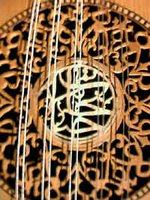8. Sonnet Blog 2: The Sonnet, The Ghazal and the Oral Tradition
 Another point of similarity between these two most celebrated poetical forms of their cultures is that they are essentially linked to music. The Western sonnet along with sister forms like the rondeau and the villanelle were part of the courtly troubadour tradition and were initially performance pieces to be sung or recited to music. Western poetical forms have moved from the oral tradition to the written one and thus the the sonnet’s sonorous roots are less evident to us.
Another point of similarity between these two most celebrated poetical forms of their cultures is that they are essentially linked to music. The Western sonnet along with sister forms like the rondeau and the villanelle were part of the courtly troubadour tradition and were initially performance pieces to be sung or recited to music. Western poetical forms have moved from the oral tradition to the written one and thus the the sonnet’s sonorous roots are less evident to us.Meanwhile, the ghazal and the Malay pantun (adapted in English as the ‘pantoum’) are still deeply rooted in oral, and - ultimately - sung, tradition. All these forms present tangible, and extended, patterns of sound which may be approximated by the human voice in almost any language. Moreover, and crucially, the principal tools of prosody are phonic; which is to say: the poem largely is the sound of the poem, whether read aloud or sub-vocalised. This is perhaps why these forms have successfully travelled from language to language, adapting themselves to the patterns of the new host language along the way. It remains to be seen whether the transition of the ‘sonnet of the East’ , the ghazal will adapt to English and other European languages successfully. Perhaps the key factor will be whether or not it retains its basic musical identity. This is more likely to happen if the ghazal retains strict form and metre.


0 Comments:
Post a Comment
<< Home